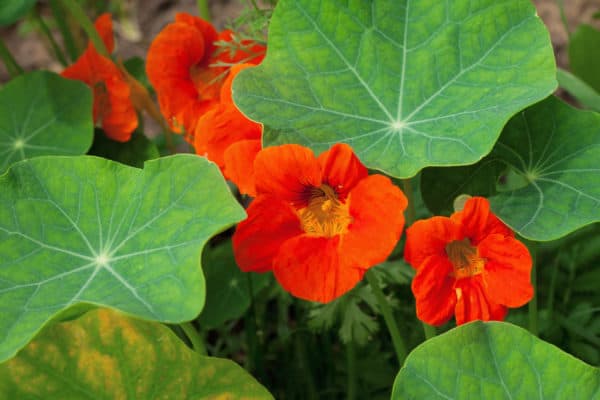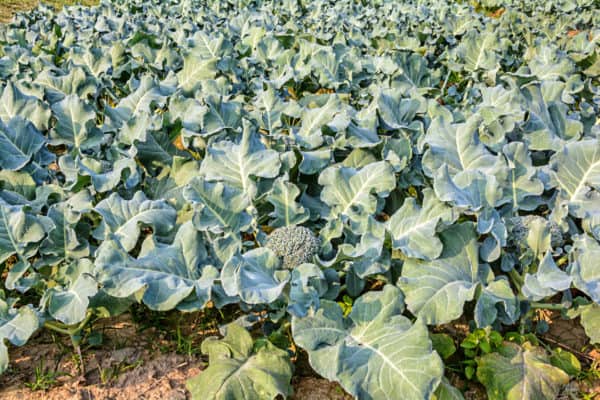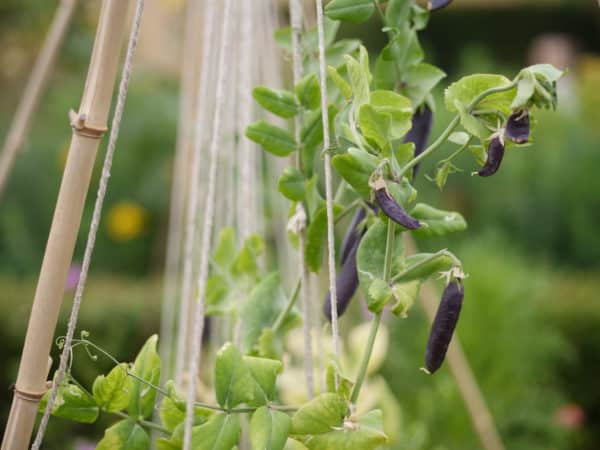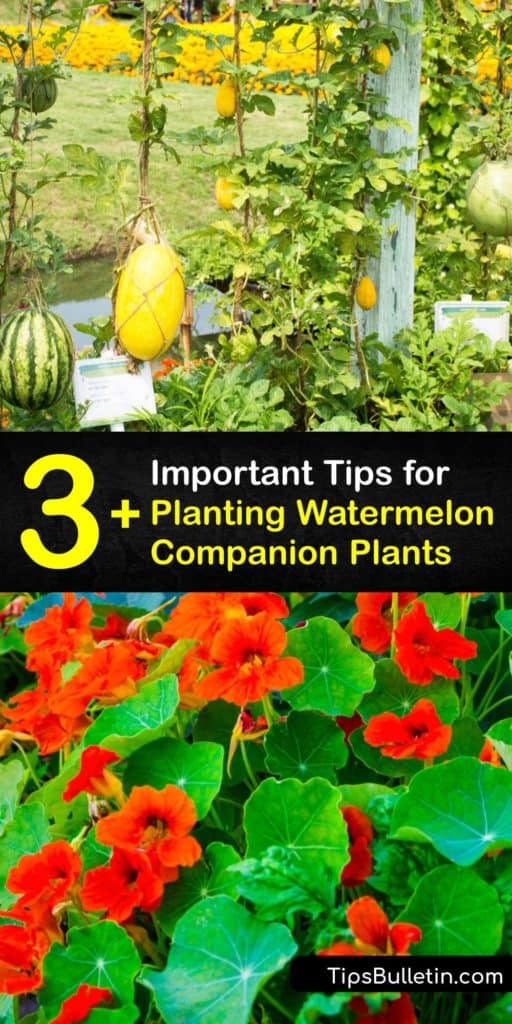Companion planting for watermelon plants involves strategic planning to optimize spacing for the veggies in your garden. For anyone beginning a vegetable garden, pests and disease are common concerns in caring for your plants long enough to bring them to harvest.
Planting the right combination of crops eliminates some worry by allowing your garden to work for you. The history of companion planting goes back to the Native Americans who created a system of planting crops that aided other crops.
Native Americans planted corn, pole beans, and squash together, allowing beans to grow along the strong cornstalk for support. The roots of pole beans boosted the nitrogen in the soil for adjacent crops. Winter squash leaves provided ground cover to regulate soil temperature and allowed the corn and beans to grow with squash for mutual benefit.

How to Know What to Plant with Watermelon
The companion planting system is still widely used by farmers and home gardeners to take advantage of their garden’s passive benefits when introducing a new crop to the mix. Continue reading to determine which crops may benefit your new watermelon plants the most.
Spacing is crucial for planting companion plants as common types of watermelons vines grow up to 20 feet in length and even smaller varieties like Sugar Baby grow vines of at least three feet.
The spacing required to accommodate this network of vines is an essential factor to keep in mind when selecting placement in your garden for watermelons and what you grow near them.

Watermelons also enjoy growing in full sun, and planting them near plants that grow taller and block sunlight may not be beneficial in the long run. To prepare watermelon seeds for planting, ensure you grow them near the right plants. Keep reading for suggestions on planting taller plants without sacrificing the sun for your watermelon.
What to Plant with Watermelon to Keep Pests Away

The first concern for growing watermelon is how to keep insects away from your plant and prevent them from ruining your hard work. While it’s inevitable that pests are attracted to the plants in your garden, don’t let them run unchecked.
Aphids are one of the main insect pests that target watermelons and risk viruses from other plants. In most cases, the damage caused by foreign diseases is worse than any feeding the aphid does to the plant itself.
Insects are heavily affected by the scent of plants so planting crops with strong smells deters them from visiting your garden. Shallots and Allium family members like chives and leeks are excellent choices for anti-fungal pest protection.
Planting certain plants near watermelon helps avoid a problem with aphids as the plants either deter aphids or attract aphids and act as trap crops.
What to Grow with Watermelon to Handle Cucumber Beetles

Cucumber beetles are small yellow insects with black stripes or spots, and both kinds enjoy watermelon. The striped cucumber beetle is of particular concern due to its ability to transmit bacterial wilt to plants.
Cucumber beetles are a significant problem for cucurbit seedlings simply by their risk of transmitting disease. Pests feeding on your plants does not mean the end of their growth cycle, but plants are highly susceptible to viruses for most of their life.
What to Grow with Watermelon for Pollination

Watermelon plants are monoecious, meaning they grow both male and female flowers needed for pollination. Like most plants, watermelons require the assistance of pollinators like bees to carry their sticky pollen from one flower to the other.
Planting the right team of companion plants aids in making sure beneficial insects visit your garden to help pollinate for fruit production.
Flowers are excellent choices to draw in beneficial insects to increase pollination in your garden. Squash bugs that cause damage to your plant by sucking the sap from leaves, eventually causing your plant to wilt, are not fans of borage.
Companion Planting for Watermelon for Growth

Pole or bush beans are excellent plants because they regulate nitrogen in the soil, which is crucial for plant health. Their ability to regulate the soil makes them good companions for watermelons; however, their size and the fact that they grow tall enough to block the sunlight is their only downside.
To avoid shade on your watermelons, grow pole beans on a trellis that faces north or east to avoid them interfering with the sunlight your watermelons require. Oregano is another plant that grows well around your watermelon, and its growth provides ground cover for developing watermelon seeds.
If you grow beans with your watermelons, choose an organic watermelon plant fertilizer that has less nitrogen since the beans work that out.
What Watermelon Companion Plant to Avoid
Avoid planting watermelon with other crops in the Cucurbitae family when looking for what to grow with watermelon. Different types like muskmelon or cantaloupe are all preferred by cucumber beetles and create more targets for these pests. Do not plant cucumbers next to watermelons, as well as these other plants.
Crops like potatoes make bad companions due to attracting different species of aphids, and tomatoes often compete with watermelons for space. This competition creates a lack of airflow in your garden, and without proper air circulation, your crops are at risk for plant diseases that enjoy damp environments.
Because watermelon vines grow so long, they shield sunlight from other nearby plants, and the plant itself creates a chemical that stunts seed germination and the growth of other plants.
These chemicals are called allelopathic chemicals and make watermelons a poor companion plant for new seeds. To use watermelon’s allelopathy to your advantage, consider growing watermelon as a living mulch along with established tall crops like okra planted ahead of time for the next growing season.
By planting the right crops near your watermelon, watermelon harvest time will be even more prolific.

We hope our article helped you decide what to plant with watermelon plants and that you’ll share our companion planting for watermelon tips with loved ones on Facebook and Pinterest.